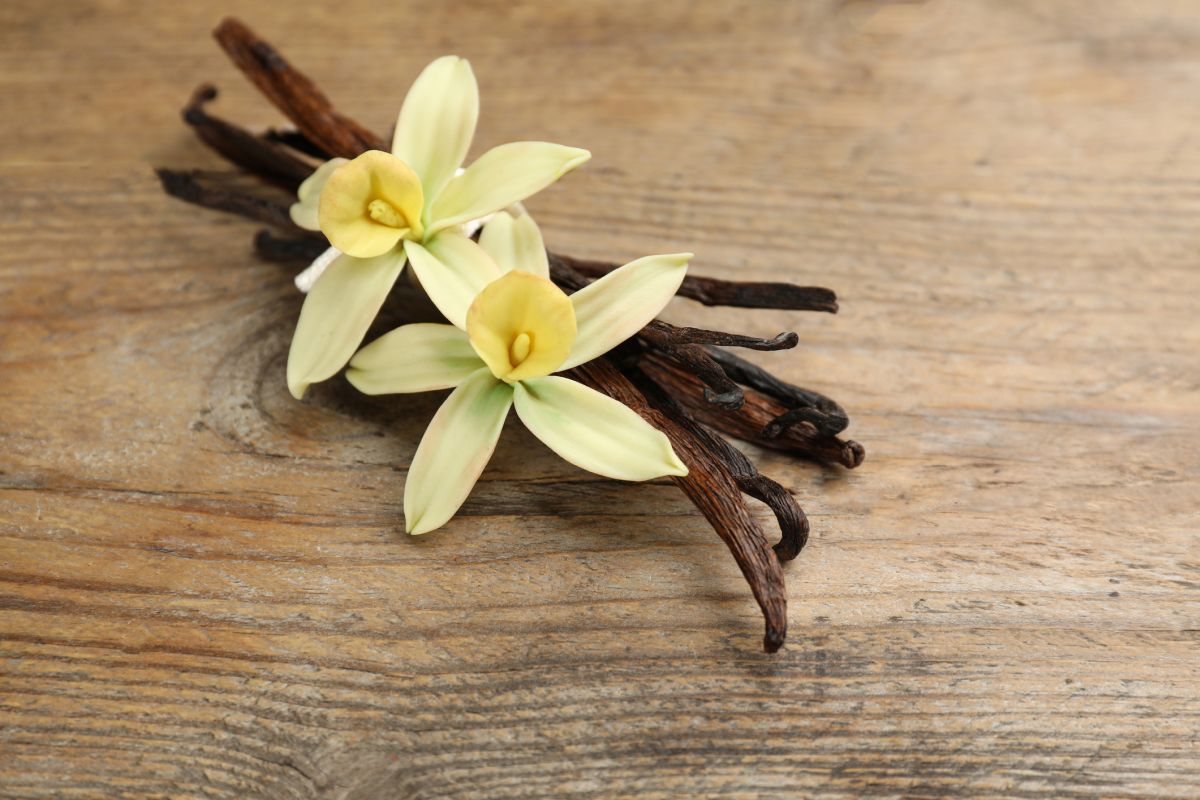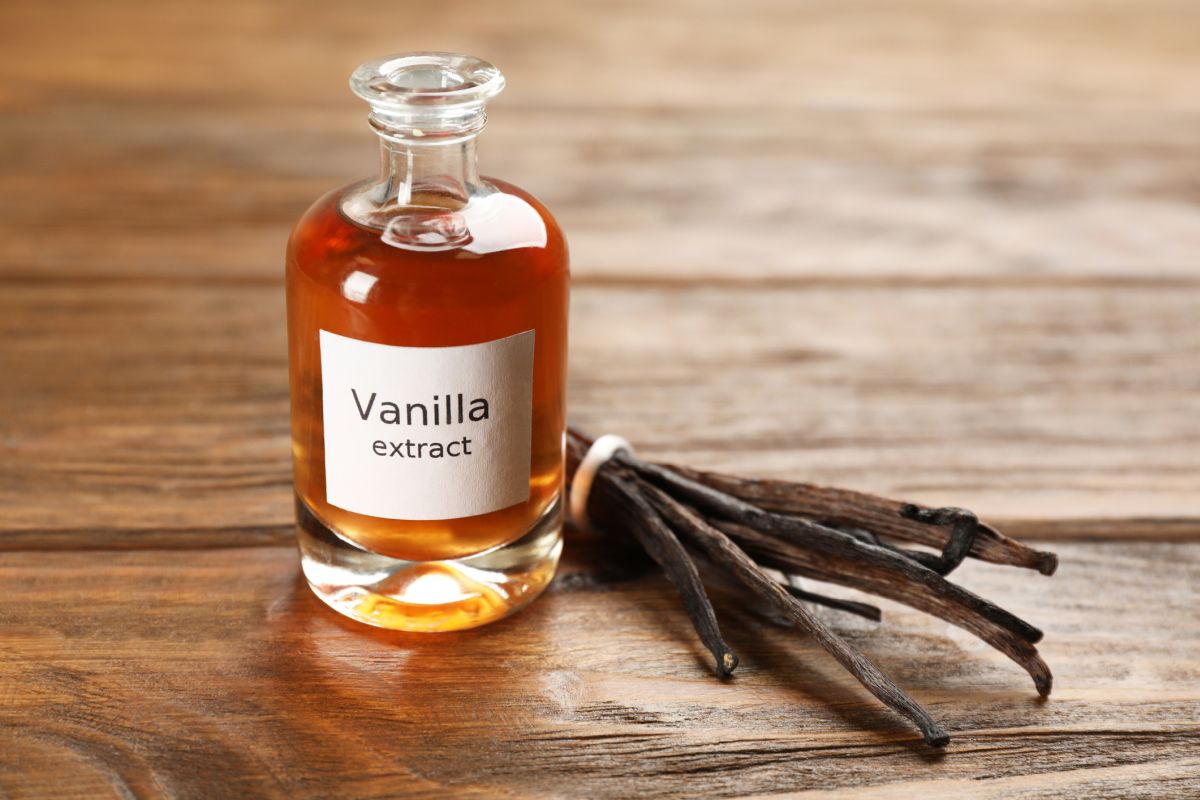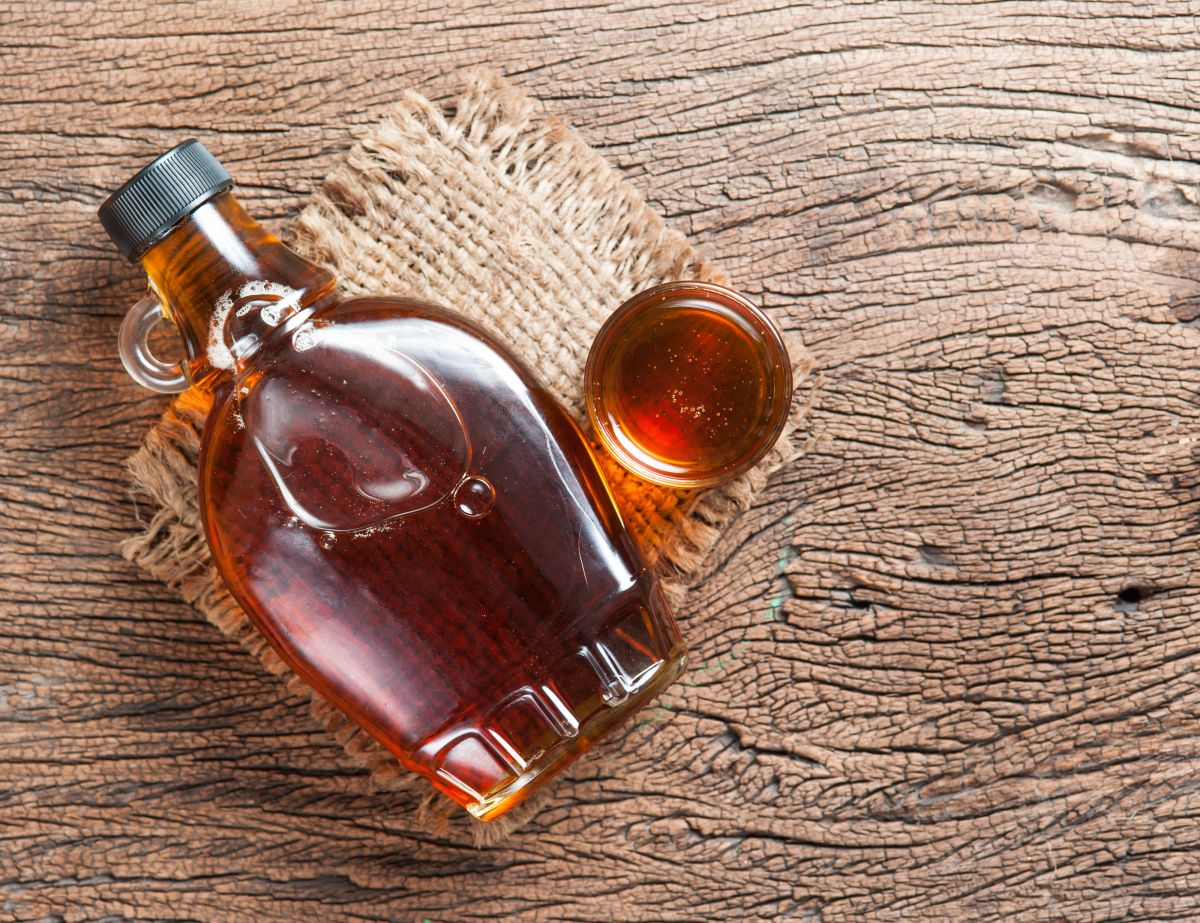Finding a vanilla bean substitute is often needed due to vanilla beans’ high cost and scarcity of them in local stores. There are some surprising alternatives to vanilla beans that you might already have in your pantry.
What Are Vanilla Beans?
Vanilla beans are the fruit of the vanilla orchid, a long, thin brown pod with small seeds. The fruit is fermented and dried before it is used in extracts or desserts.
Common Uses for Vanilla Beans
- Vanilla extract – the flavor of the vanilla beans is extracted by soaking vanilla beans in alcohol for a period of time.
- Flavoring desserts and pastries – vanilla is a popular flavor in many baked goods and desserts, and you can use the vanilla beans directly in the products for a smooth and rich vanilla flavor.
- Perfumes and fragrances – many high-quality perfumeries use vanilla in their fragrance blends.
- Spice or flavor additive – vanilla is found in many food products, not just baked goods. Some of them include coffee, sodas, and milk.
Why Vanilla Beans Are So Expensive
The vanilla orchid is a complex plant to grow, and harvesting beans is laborious. The fermenting, drying, and curing process takes a long time – 6 – 8 months minimum. In addition, if something was to go wrong in any of the steps needed to produce vanilla pods, the whole batch, and all of the pods would be ruined.
The high demand with low production also increases the price tag.
How to Choose a Substitute for Vanilla Bean
- Consider the price – some substitutes are more expensive than others, so if you’re trying to make a big batch of cookies for kids, choosing a cheaper alternative might be best.
- Consider the application – vanilla extract works better in frosting than vanilla sugar, but vanilla sugar is much more applicable in hot beverages.
- The taste will differ – some vanilla bean substitutes simply lacks the intense punch of flavor vanilla beans can add, so if you want a decadent vanilla pastry cream, use a high-quality vanilla flavoring for the best results.
16 Best Vanilla Bean Substitute Options
1. Vanilla Paste
Vanilla bean paste is made from ground-up vanilla beans, with a few binding agents such as corn syrup added. The sweetness of the binding agent might make your recipe slightly sweeter, but it works very well as a high-end alternative to vanilla beans. Nielsen Massey uses vanilla bean paste in their classic creme brulee.
2. Vanilla Extract
According to Food Champs, vanilla extract is an excellent alternative to vanilla beans, but with the added benefit that it has a nearly indefinite shelf life, whereas vanilla beans typically only last about two years.
3. Vanilla Essence
You might think that vanilla essence and extract are the same things, but vanilla essence is an artificial flavoring. It can be used and yield convincing results, but it might not be as mellow as real vanilla beans. Healthline explains the key differences.
4. Bourbon or Rum
If you’re making a baked dessert, you can substitute bourbon or rum in vanilla’s place for an aromatic and decadent taste. As the alcohol evaporates, you’re left with a sweet vanilla-like flavor. Food 52 shows you how to do it and which dark spirits to choose.
5. Vanilla Powder
Although a lot less common, vanilla powder is a great substitute for vanilla beans. The Kiwi Importer explains when and how you can use it.
6. Vanilla Sugar
Vanilla sugar is made using vanilla beans and normal sugar, so you can easily substitute some of the sugar in your recipe with vanilla sugar to achieve a great vanilla taste. Mu Mu Muesli explains what it is and how to make your own if you find it works well.
7. Almond Extract
Almond extract can add the same luxurious flavor to a baked item as vanilla beans would. This won’t work well for something that has to be vanilla flavored, so bear that in mind. Leaf.tv guides you on how to use almond extract as a vanilla substitute.
8. Maple Syrup
Pure maple syrup has a warm and rich flavor, so adding that to your recipe and tweaking the sugar ratios slightly will result in a delicious rich cookie or baked good. Healthline explains some health and nutritional benefits of maple syrup.
9. Vanilla Liqueur or Vodka
Since the vanilla extract is vanilla beans soaked in alcohol to extract the flavor, vanilla liqueur or vodka works just as well in your baked goods. BBC Good Food has made a vanilla vodka cake that is moist and packed with vanilla flavor.
10. Vanilla Milk
Whether you have plant-based vanilla milk or vanilla-flavored cow’s milk, you can easily swap out the milk in your recipe with vanilla milk to add a subtle vanilla flavor. Pressed.com mentioned they use vanilla milk in baking cookies, brownies, and cakes.
11. Honey
Honey won’t make your baked goods taste like vanilla, but it can add a depth of flavor if you only have regular sugar with no vanilla substitutes. Plus, according to Mayo Clinic, honey has a lot of health benefits.
12. Coffee
Vanilla is often added to chocolate cakes to bring out the flavor of the chocolate, but espresso or coffee might just do it better than vanilla can. You don’t need a lot, follow Lively Table’s recipe for triple chocolate cookies without the vanilla, and you’ll see what the coffee does to the chocolate.
13. Cinnamon
Cinnamon has a very distinct flavor profile, but it is similar to vanilla because it is also a warm and rich flavor. Your cookies won’t taste like vanilla, but they make for a delicious flavor profile where you won’t miss the vanilla. Try Nutrition in the Kitch’s ginger molasses cookies without any vanilla.
14. Citrus Zest
Vanilla makes any pound cake’s flavor pop, but a bit of citrus zest can do the same. Of course, it will taste a bit like lemon or orange, but the brightness will be much better than just going without vanilla. Try making Lemons for Lulu’s mimosa bundt cake but replace the vanilla with zest!
15. Vanilla Coffee Creamer
You can use vanilla coffee creamer as a substitute for milk and vanilla in your recipes, and The Commons Cafe has a great overview of how to use it in frosting.
16. Vanilla Coffee Syrup
If you’re making a cake that requires both vanilla and to be soaked in simple syrup, simply replace the simple syrup with some vanilla coffee syrup. Sweetness and Bite explain how to use simple syrup, but you can use vanilla coffee syrup instead.
Tips for Vanilla Bean Substitution
- Look at the ingredients – you might find that your substitution contains a lot more sugar or dairy than you might have thought, so adjust your recipe accordingly.
- Beware of allergies – if you use almond extract, you have to consider another alternative if your guests have nut allergies.
- Start with small amounts – some vanilla bean substitutes are more flavored than others.
- Consider the alcohol – extracts, and liqueurs contain alcohol, something your guests, children, or even recipe might be sensitive to.
Vanilla Bean Substitute FAQ
How Long Do Vanilla Beans Stay Good?
If stored properly, vanilla beans can stay good for up to three years. Always store your vanilla beans in an airtight container or vacuum-sealed out of the direct sun for the best shelf life.
Which Is Stronger, Vanilla Bean Paste or Extract?
Vanilla bean paste has a slightly stronger flavor than vanilla extract. But you might find vanilla extract more readily available at a slightly lower price.
When Is It Best to Just Stick With Real Vanilla Beans?
It is best to use real vanilla beans in a recipe where you don’t want extra liquids or a recipe where vanilla is the star of the dish, like creme brulee or fresh vanilla pastry cream.
Are Vanilla Beans as Healthy as Walnuts?
Vanilla has a few trace elements that are important for your health, but walnuts still have a lot more nutritional value than vanilla beans. Vanilla has a lot fewer calories than walnuts and adds to your daily manganese intake, but walnuts offer a wider range of health benefits.




Leave a Reply